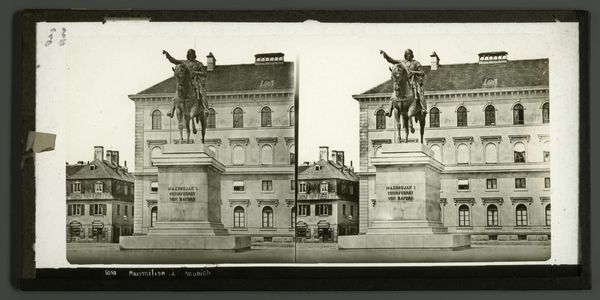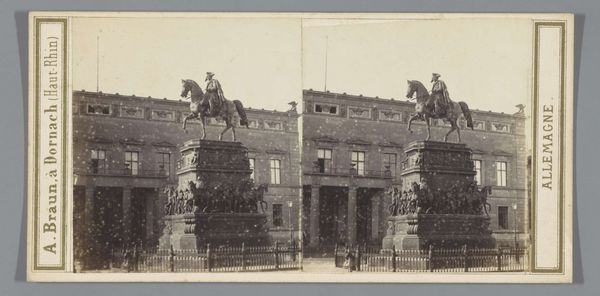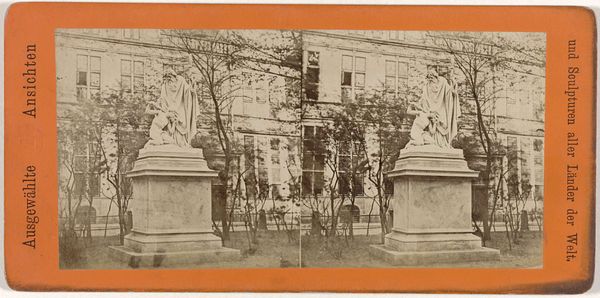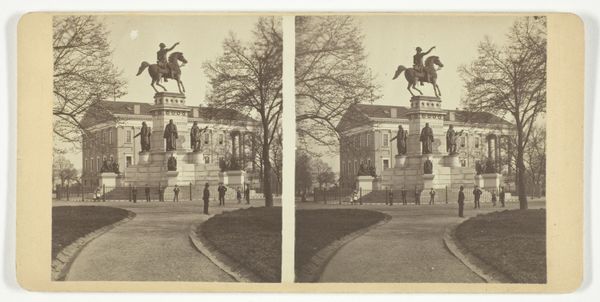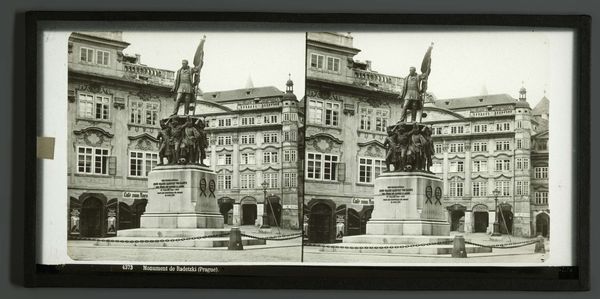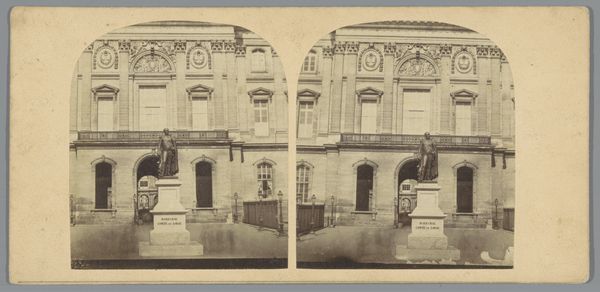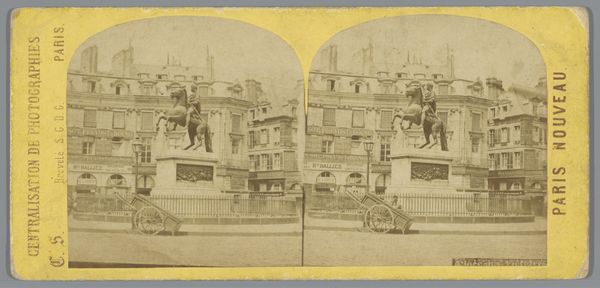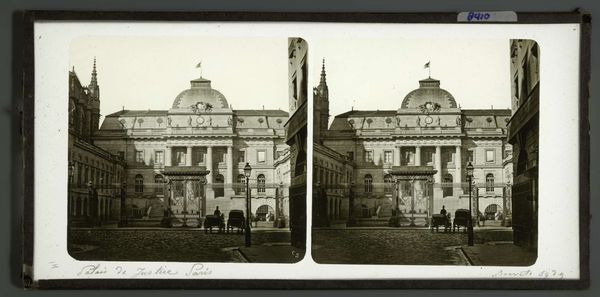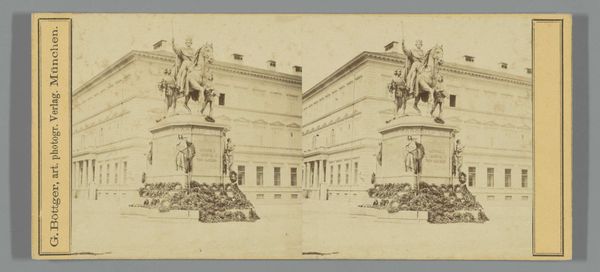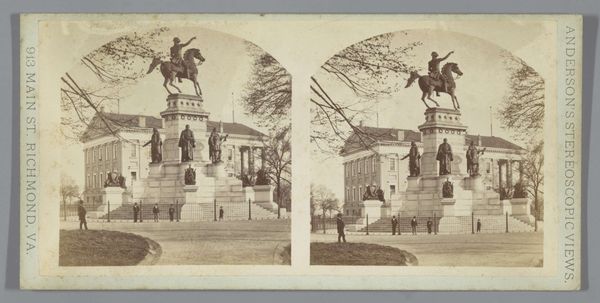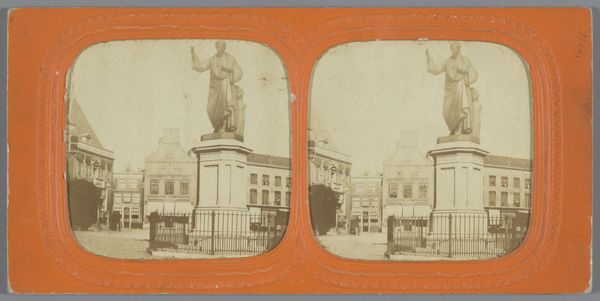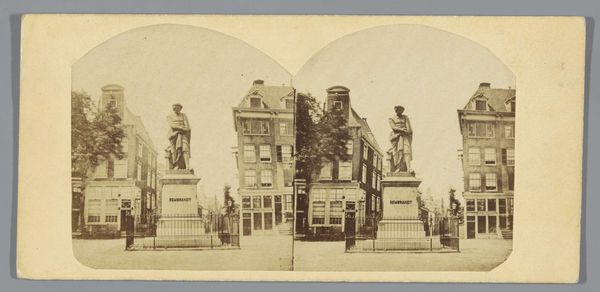
Ruiterstandbeeld van Maximiliaan I van Beieren op het Wittelsbacherplatz in München 1860 - 1890
0:00
0:00
Dimensions: height 85 mm, width 170 mm
Copyright: Rijks Museum: Open Domain
Curator: What strikes me about this photograph, taken sometime between 1860 and 1890, is the palpable air of authority it conveys. Here we have a gelatin silver print depicting the equestrian statue of Maximilian I of Bavaria in Munich's Wittelsbacherplatz. Editor: It's certainly imposing! The scale, composition, and the subject all project a clear message of dominance and control. It evokes, perhaps unsurprisingly, that specific 19th-century mode of establishing historical narratives through public sculpture. Curator: Indeed. Equestrian statues, from antiquity onward, have been potent symbols. In this particular depiction of Maximilian, what enduring symbolic values do you perceive in the visual shorthand being employed? Editor: Well, horses have always represented power, nobility, and virility, dating all the way back to Roman and even earlier Near Eastern ruler figures on horseback. Putting Maximilian on one visually connects him to this potent lineage. This is the construction of dynastic power and, inevitably, exclusionary national identity building. I immediately ask who is omitted? Curator: That’s a piercing observation. It makes you question the image as an objective record. The photographic medium provides the illusion of immediacy, but what hidden mythologies does the image construct for the ruling elite? Editor: Precisely! In the act of ennobling a single figure, power dynamics are codified that, for instance, erase working-class experience. How many farmers toiled and paid taxes that afforded the making of such a lavish statue that aggrandizes only this man? These historical imprints must be considered when gazing on the past through art. Curator: A powerful question indeed! Beyond such important, perhaps, oppositional, contexts, can the symbol-systems communicate the historical imprint? Does that raised arm intend a sense of guidance, a pointing toward the future perhaps? Is it an act of civic blessing? Editor: Perhaps. The problem is that often those “blessings” have historically materialized into mandates or acts of oppression. His is, regardless of his specific intention, always an act that wields its historical force as its subject expands through spatial occupation, which makes us contend with issues such as wealth accumulation, or issues relating to colonial dispossession and the violence inherent within these historical gestures. Curator: Such historical and material contexts can remind us of the limitations of individual heroism as well as the ongoing need to critically reappraise our relationship to cultural memory and the power of symbolism. Editor: Absolutely. By recognizing such power imbalances and the legacy they produced, art like this becomes invaluable to deconstructing exclusionary history, prompting critical awareness.
Comments
No comments
Be the first to comment and join the conversation on the ultimate creative platform.
